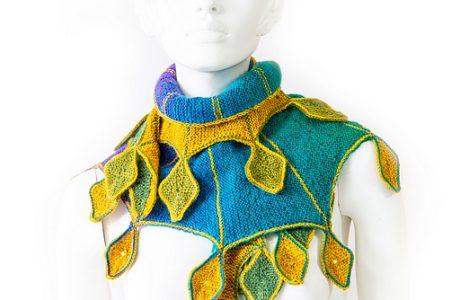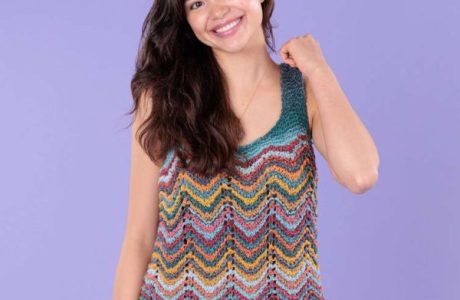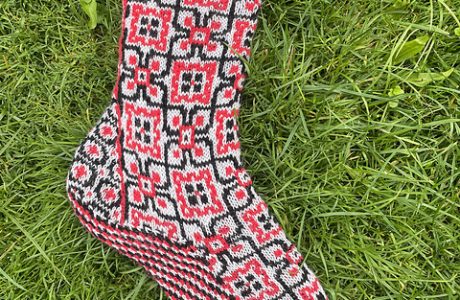We’ve just about made it to the end of the Knitted Kitchen blog hop. We’ve decided to take off the month of December because doesn’t everyone have enough to do in December?
I decided to make my last contribution the perfect way to use up little bits of yarn you might have from other projects if you’ve been following along this year: a log cabin dishcloth.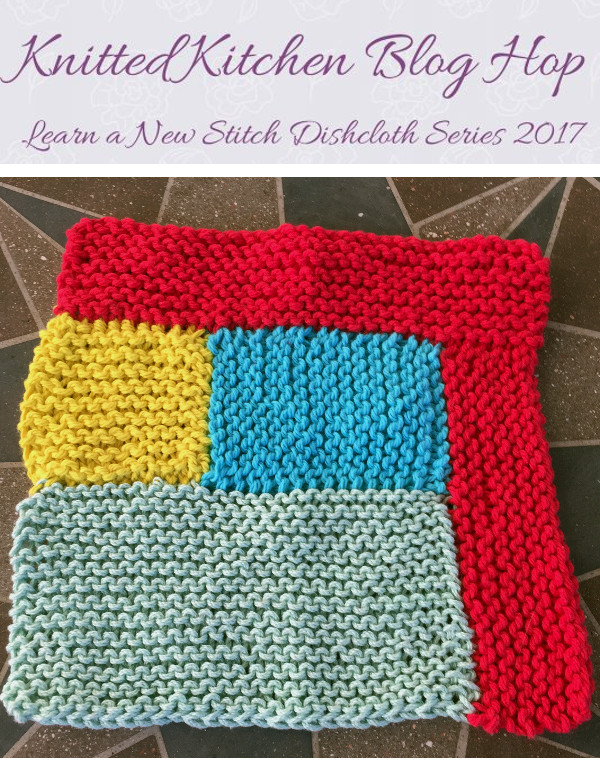
I learned to log cabin technique at a conference from the Mason-Dixon knitters, who have done more to popularize the technique than anyone. It’s a dead-simple method for making a fun knit fabric of any size you like.
How to Knit a Log Cabin Block
This is more of a method than a pattern, though I’ll share my exact numbers below. To begin, cast on a small number of stitches, like 10 or 12, and knit until your piece is about square or until you’re about to run out of yarn.
Bind off all but the last stitch.
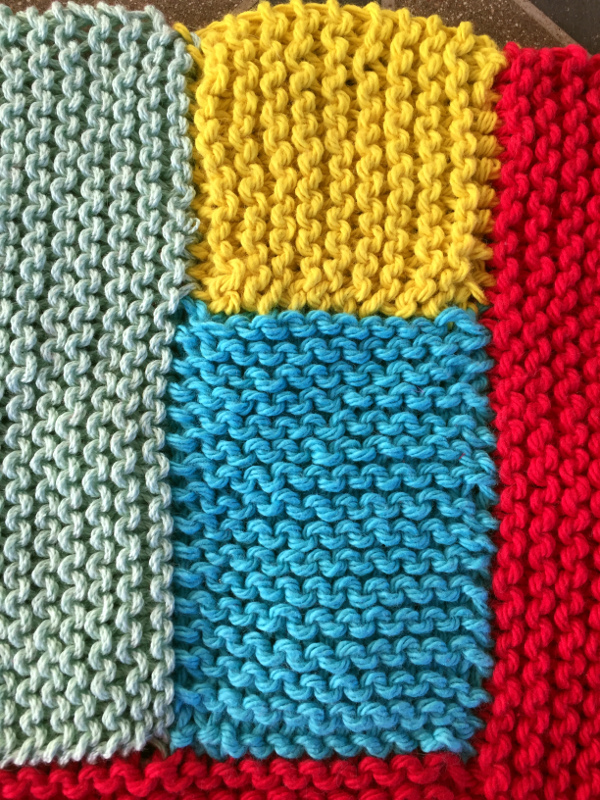 Join a new color of yarn and pick up stitches along the side of the piece you just knit.
Join a new color of yarn and pick up stitches along the side of the piece you just knit.
Knit in this color to desired size, or until you almost run out of yarn if you’re doing a scrap project.
Repeat this process around, changing colors each time you turn a corner, or as desired. On mine I did the last two turns the same color to make a sort of border (and because I was running out of other colors of yarn) but you can continue to change colors as you like and make your project as big as you like.
I’m definitely tempted to make a giant log cabin blanket after this one.
Log Cabin Dishcloth Pattern
If you want to make a dishcloth like mine, you’ll need small amounts of medium weight cotton yarn in different colors. I used about 60 yards total of various Lion Brand yarns (mostly Kitchen Cotton) — thanks so much to Lion Brand for sponsoring the Knitted Kitchen Blog Hop this year!
You’ll also need a pair of size 8 US/5mm knitting needles.
Gauge is not critical but I got 4 stitches and 8 rows per inch/2.5 in Garter Stitch.
This project can be made to any size, but mine is 8 inches/20 cm square.
I started with the yellow square. Cast on 12 stitches and knit about 18 rows, until your piece is about square or until you’re about to run out of yarn. If you slip the first stitch of each row it will make the picking up process a little easier, but it’s not required if you forget.
Bind off all but the last stitch.
Change yarn colors (I switched to blue) and turn the work so you are picking up stitches along the side of the piece you just knit. I like to pick up stitches along the edge, then knit them, but you can also pick up and knit as you go. Just be consistent throughout the project in how you do it and what side of the work you are on when you do it so that the joins will all show on the wrong side. (I actually used a circular needle so if I picked up my stitches from the wrong side I could just slide them down and work across from the other end.)
Knit to desired size; my block is about 32 rows.
Bind off all but one stitch and turn again, this time picking up stitches along the long side, across both the pieces you’ve already knit (this is the minty green in my dishcloth). Knit as long as you want and repeat the process as much as you want.
My next portion was the red that runs across the green and blue, then the one that goes along the red, blue and yellow. If you did another row it would go along the narrow side of the red, yellow and green, and you’d continue in this manner as long as you wanted.
The Knitted Kitchen Blog Hop
This is the second-to-last week of the Knitted Kitchen Blog Hop! It’s been so much fun sharing these patterns with you and seeing what other people are making in the Facebook group. You can find all the pattern links on this page.
Thanks to my cohosts, Underground Crafter, Creative Crochet Workshop, and Stitches ‘N Scraps for letting me in on the fun this year. They’ve got another great year of little learning projects planned for 2018 you won’t want to miss!
Why use dishcloths? Dishcloths are re-useable and save on kitchen waste. Most dishcloths are made using cotton yarn and can be thrown into the washing machine when dirty. This makes them very hygienic, especially when compared to kitchen sponges, which sit on the sinks for days if not weeks. Another great thing about dishcloths is when it comes to knitting the knit up quickly and are great for gift giving. Everyone needs a dishcloth. For gifting, It’s not something that has to be in fashion or a certain colour for the recipient to like it, though there are so many great dishcloth pattern designs out there.
Looking to knit more dishcloth patterns ? Check out these dishcloth patterns on Etsy

